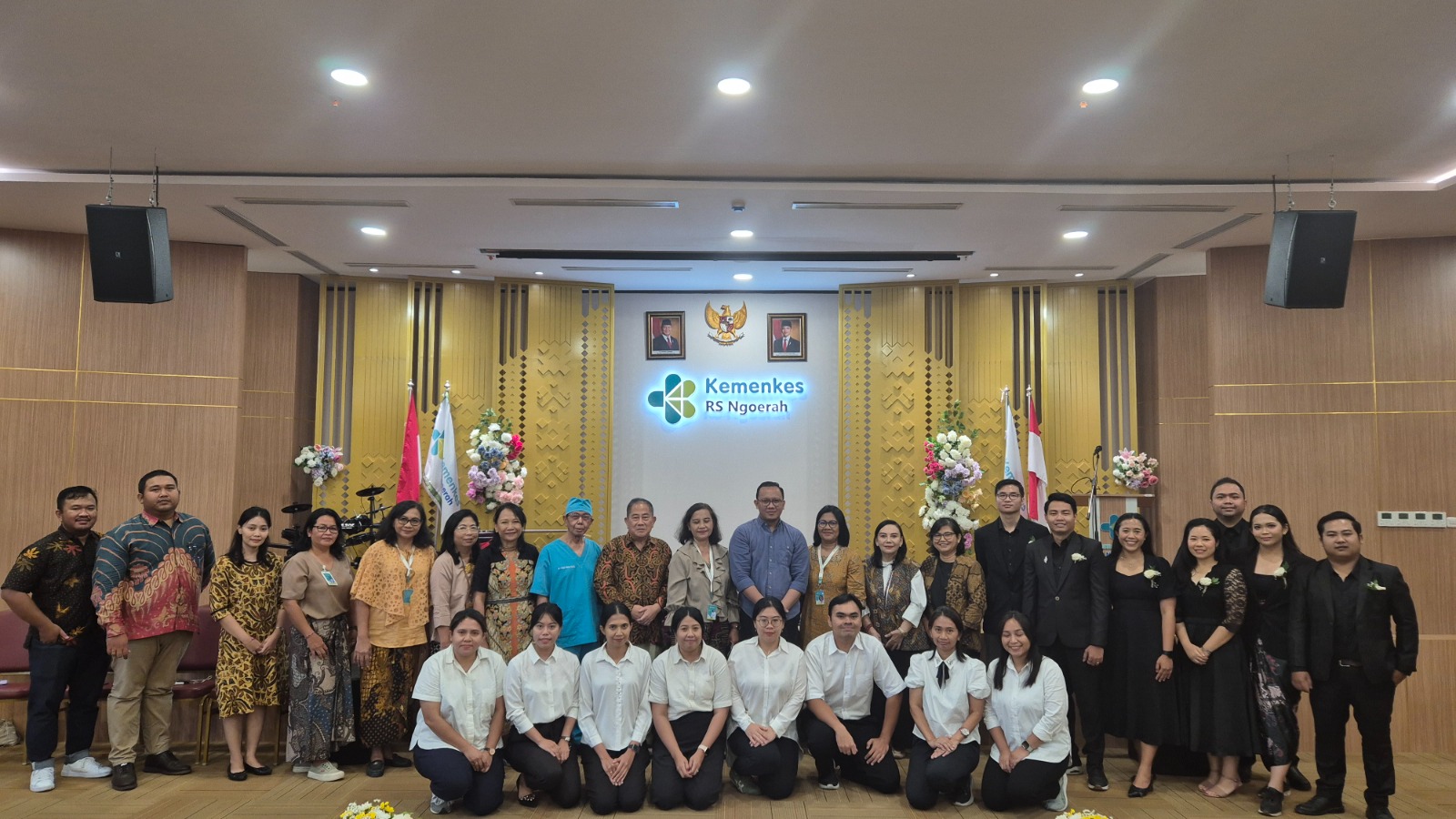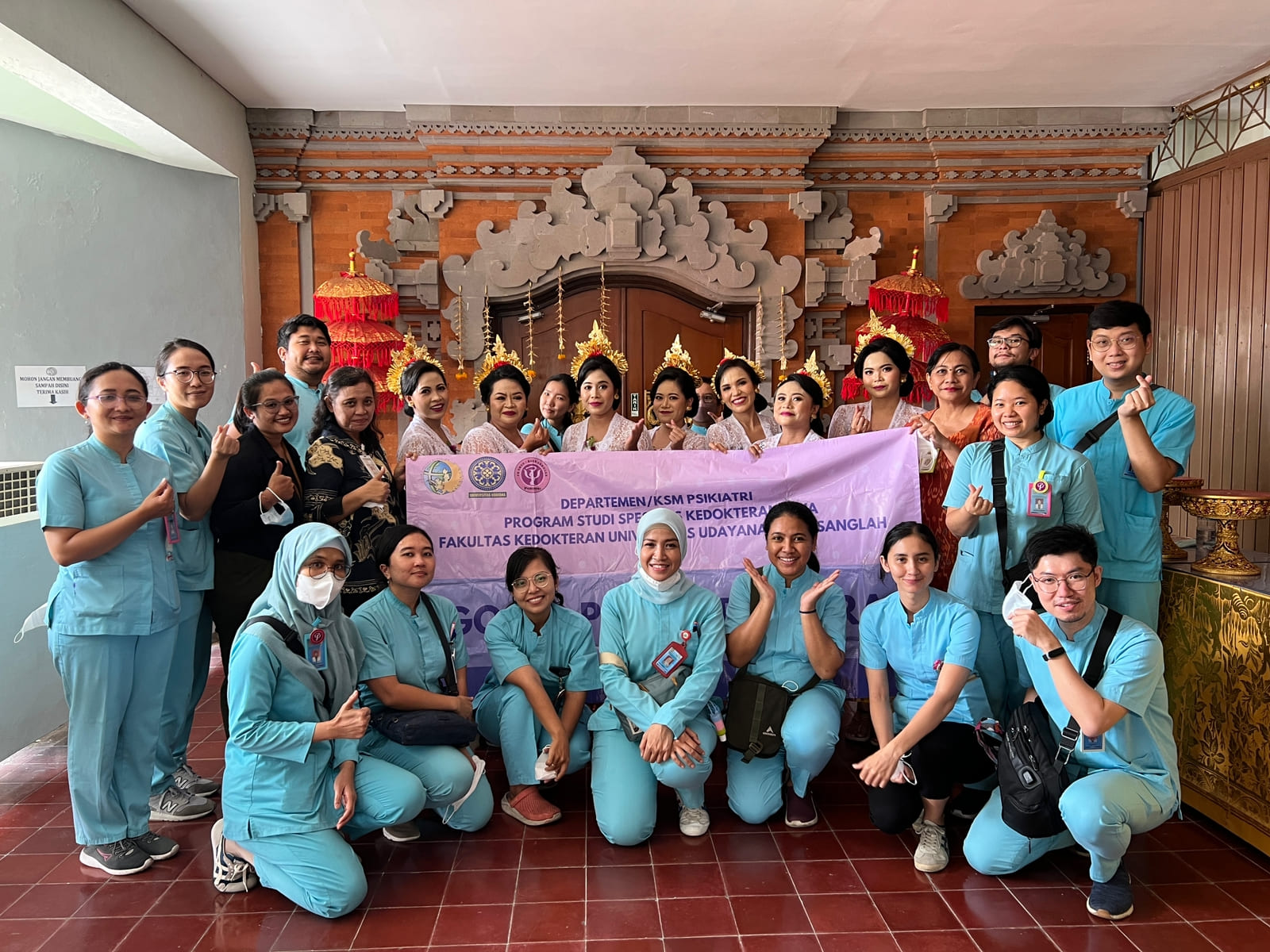Dr. dr. I Putu Belly Sutrisna, S.Ked, M.Biomed, Sp.KJ earns his postgraduate degree General
New Doctor of Medicine Proves Yoga's Role in Overcoming Internet Addiction
Udayana Faculty of Medicine, July 26, 2022
Taking place in the third floor courtroom, Postgraduate Building, Denpasar, on Monday, July 25 2022, the Doctoral Promotion exam took place with promovenda candidate dr. I Putu Belly Sutrisna, S.Ked., M.Biomed, Sp. KJ who raised the dissertation title "Hatha Yoga Training Internet Addiction Improves Dopamine D5 Receptor mRNA Expression, Nuclear Factor Kappa Actived B-Cells (NFkB) mRNA Expression and Symptoms of Internet Addiction in Adolescents."
Internet addiction is a form of behavioral or non-substance addiction whose prevalence rate is increasing, especially during the COVID-19 pandemic. Until now, standard treatment for internet addiction has not been established (Li et al., 2020). Studies on handling internet addiction to date still need to be developed and become an emergency for a solution to be found immediately. Meta-analytic studies show that exercise interventions, group counseling programs and cognitive behavior therapy (CBT) have a significant effect on improving internet addiction symptoms. Sports interventions were found to provide superior results in reducing withdrawal symptoms or dropping out of the internet (Liu et al., 2017).
Hatha Yoga is used as an integrated therapy that has been approved and proven to be effective in dealing with addiction including internet addiction, in addition to the usual psychotherapy such as cognitive behavioral therapy (CBT) (Kuppili et al., 2018; Tripathi, 2018). Hatha Yoga Internet Addiction (HYAI) training was developed from Hatha Yoga to be able to overcome internet addiction which consists of Asana Suryanamaskara, Nadi Shodanam Pranayama, Pratyahara and meditation. HYAI training is carried out based on sports guidelines from the American College of Sports Medicine (ACSM) and WHO, namely using the FITT-VP method which is described by frequency (how often is it done), intensity (how hard is the training), time (how long is the training), type (type of training), volume (total number of trainings), and progression (increase in a week) (Riebe et al., 2018; Scheffer and Latini, 2020). Training for adolescents is recommended for 150 minutes/week aerobic exercise at moderate intensity (WHO, 2020).
The study used the Randomized Community Trial Control-Group Pretest - Posttest Design, involving a sample of adolescents aged 15-18 years who experienced internet addiction with a total sample of 34 people. The samples obtained were randomly allocated which were divided into two groups, namely the HYAI Group and the Control Group. A total of 12 participants were analyzed in the HYAI Group who were given training 3 times/week for 60 minutes in 8 weeks and 17 people in the Control Group were given CBT 1 session/week in 8 weeks.
Asana training in HYAI can increase CBF which can result in increased BDNF production through activation of myokine (irisin) and PGC-1a, which can stimulate rapamycin (mTHOR) signals for the neuroplasticity process of RDD5 receptors (Basu-Ray, 2021; Tripathi, 2018). With this increase in RDD5, it can later function in controlling the desire or motivation of someone who is experiencing internet addiction to search the internet.
Nadi Sudhi Pranayama, Pratyahara and meditation decrease sympathetic nerve tone and increase parasympathetic nerve tone which functions in regulating the balance of the HPA-Axis in controlling cortisol production in the body (Basu-Ray, 2021). Controlled cortisol can reduce the signal of the NFkB transcription factor which can reduce the inflammatory response in internet addiction (Munhoz et al., 2006).
This research is the first to examine the effectiveness of yoga from the biomolecular side of RDD5 and NFkB on internet addiction. This study proves that HYAI training 3 times/week for 60 minutes in 8 weeks significantly increases RDD5 and reduces NFkB which is the basis for improving internet addiction symptoms as measured by a decrease in the IAT-Ina score.







UDAYANA UNIVERSITY